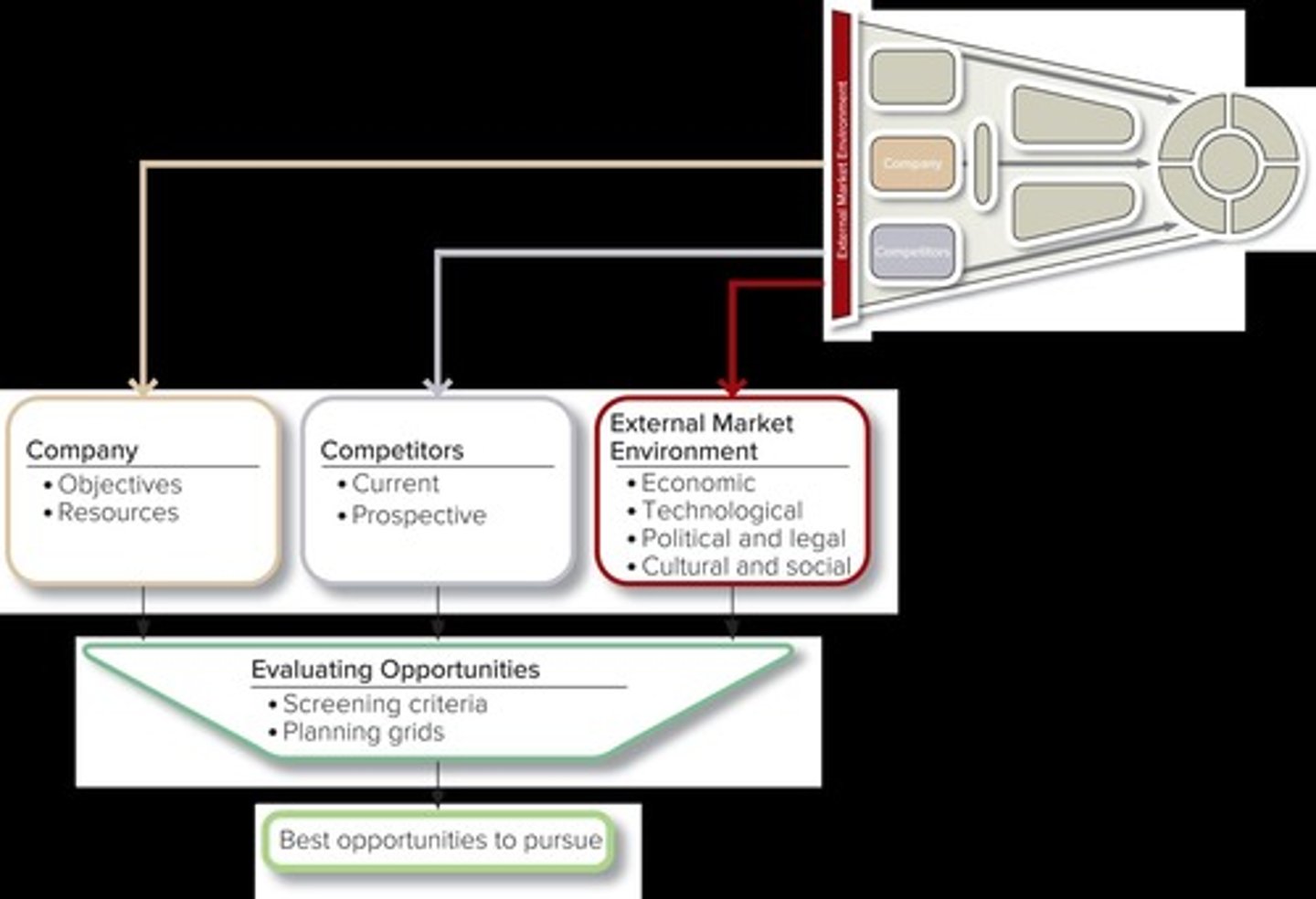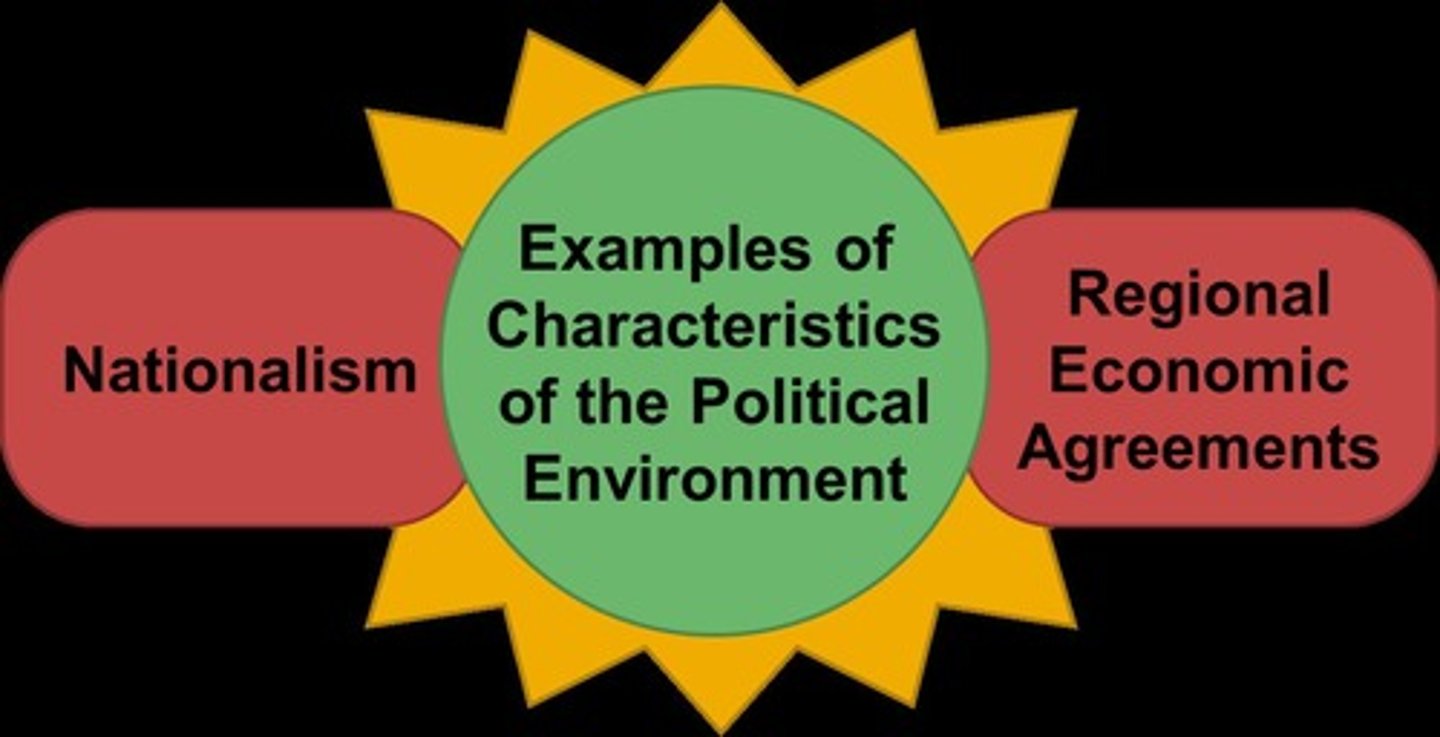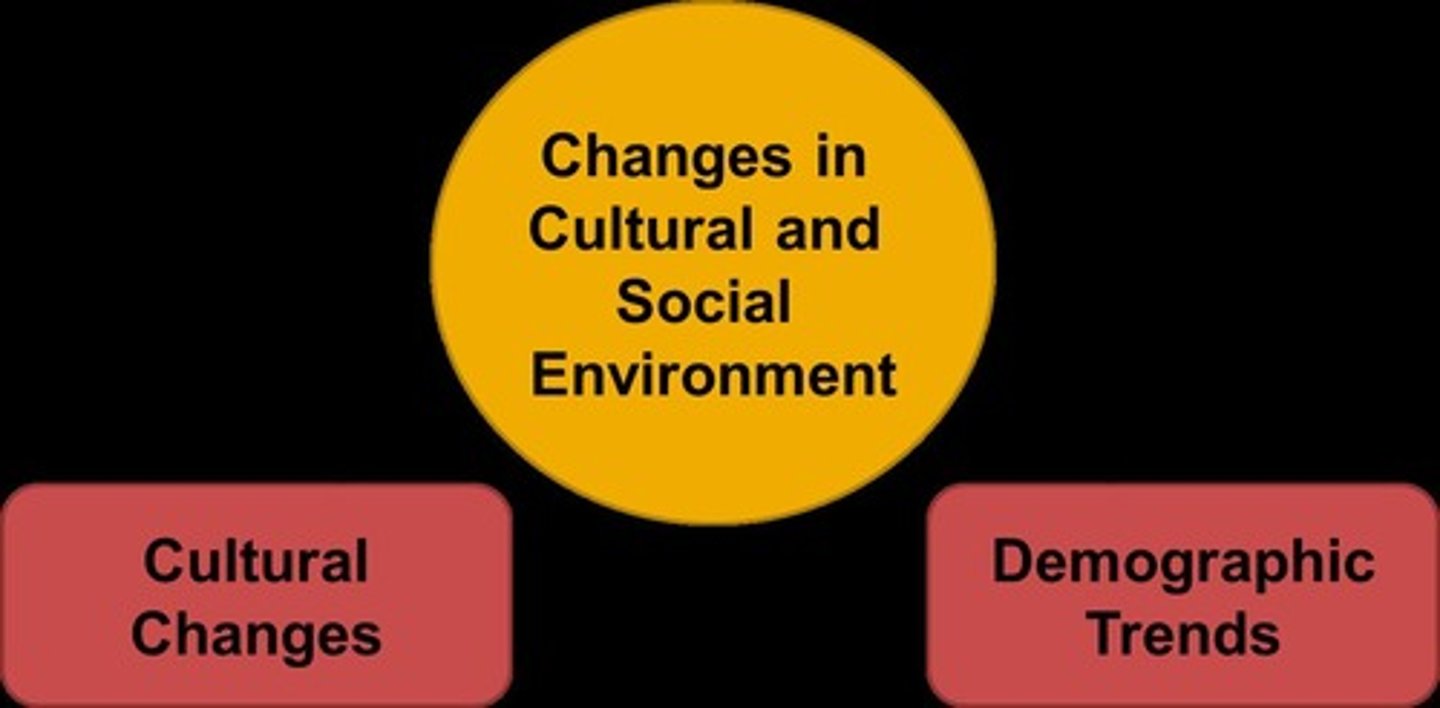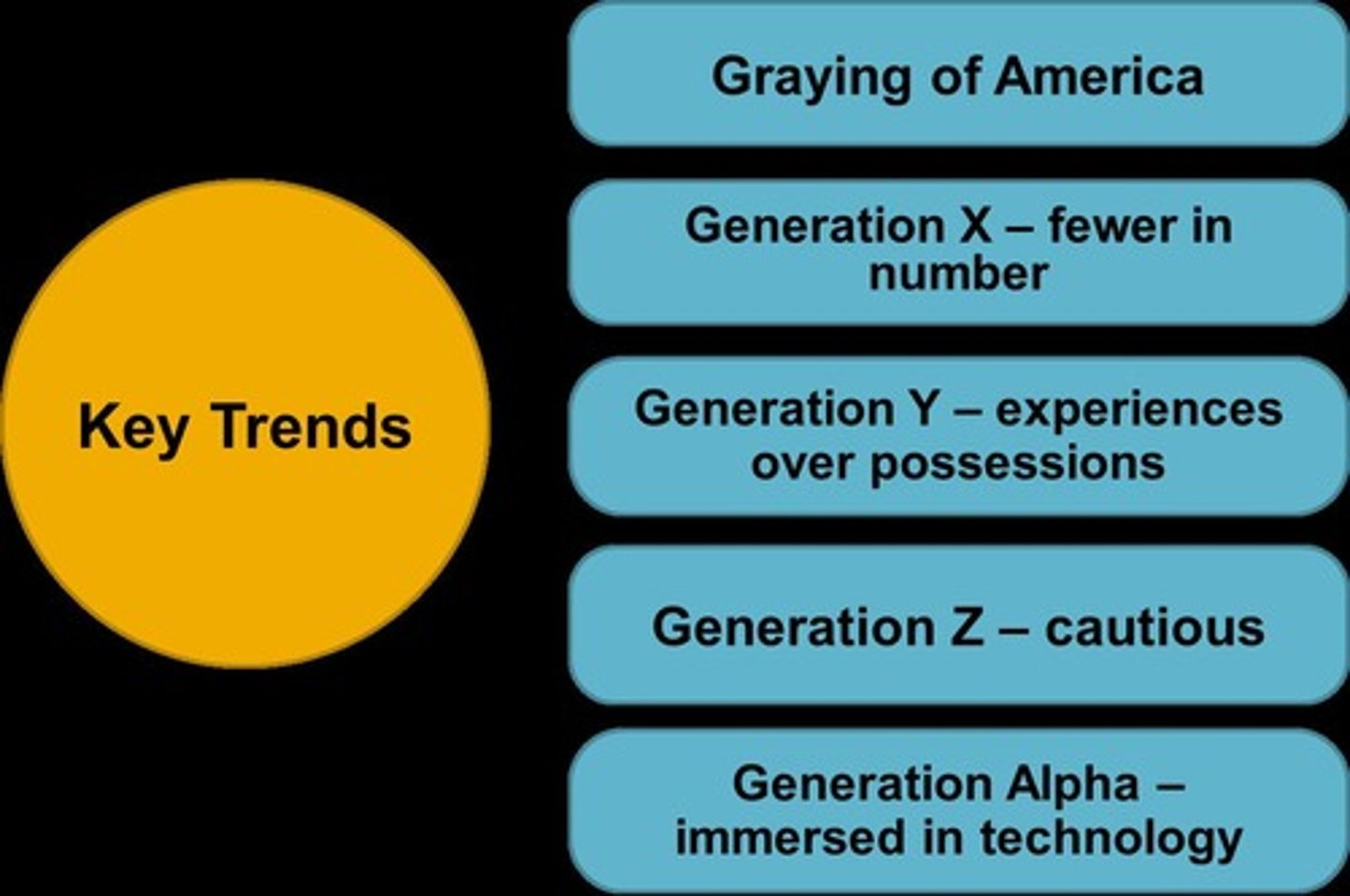Evaluating Opportunities in the Market Environment
1/49
There's no tags or description
Looks like no tags are added yet.
Name | Mastery | Learn | Test | Matching | Spaced |
|---|
No study sessions yet.
50 Terms
Marketing Strategy Planning
The process of developing strategies to achieve marketing objectives.
Competitor Analysis
The assessment of competitors to understand their strengths and weaknesses.

Sustainable Competitive Advantage
A long-term edge over competitors that is difficult to replicate.
Economic Environment
The economic factors that influence the market environment, such as interest rates and inflation.
Political and Legal Environment
The laws and regulations that affect marketing strategies.
Cultural and Social Environment
The societal norms and values that influence consumer behavior.
Demographic Trends
Changes in the population characteristics that can impact marketing strategies.
Competitive Barrier
Obstacles that make it difficult for new competitors to enter a market.
Pure Competition
A market structure characterized by many firms selling identical products.
Monopoly
A market structure where a single firm controls the entire market.
Oligopoly
A market structure dominated by a small number of firms.
Monopolistic Competition
A market structure where many firms sell products that are similar but not identical.
Competitive Environment
The dynamic external system in which businesses compete.
Technological Environment
The impact of technology on the market and business operations.
Market Opportunity
A favorable situation in the market that can be exploited for profit.
Company Resources
The assets and capabilities that a company has to achieve its goals.
Information about Competitors
Data and insights regarding the actions and strategies of competing firms.

Differentiation Strategy
A strategy that aims to distinguish a product or service from others in the market.
Interest Rates
The cost of borrowing money, which can influence market conditions.

Housing Market
The market for buying and selling residential properties.
Family-Oriented Restaurant
A dining establishment that caters to families, often with a diverse menu.
Competitive Advantage
An advantage over competitors gained by offering greater customer value.
Market Environment
The combination of internal and external factors that influence a company's marketing strategies.
mission statement
A formal summary of the aims and values of a company, organization, or individual.
purpose statement
A declaration that defines the reason for an organization's existence.
economies of scale
Cost advantages that a business obtains due to the scale of operation, with cost per unit of output generally decreasing with increasing scale.
competitive environment
The dynamic external system in which a business competes and functions.
sustainable competitive advantage
An advantage that allows a company to maintain its market position over a long period.
competitor analysis
The process of identifying and evaluating the strengths and weaknesses of competitors.
competitive rivals
Companies that offer similar products or services and compete for the same customers.
market share
The portion of a market controlled by a particular company or product.
economic environment
The overall economic conditions that influence the functioning of a business, including factors such as inflation, unemployment, and economic growth.
technology
The application of scientific knowledge for practical purposes, especially in industry.
artificial intelligence (A I)
The simulation of human intelligence processes by machines, especially computer systems.
intelligent agent
A system that perceives its environment and takes actions that maximize its chances of successfully achieving its goals.
machine learning
A subset of artificial intelligence that involves the use of algorithms and statistical models to enable computers to improve their performance on a task through experience.
metaverse
A collective virtual shared space created by the convergence of virtually enhanced physical reality and physically persistent virtual reality.
nationalism
A political ideology that emphasizes the interests of a particular nation, often in opposition to foreign influence.

free trade
A policy that allows goods and services to be traded across international borders with minimal government intervention.
cultural and social environment
The set of values, beliefs, and practices that shape the behavior of individuals within a society.

sustainability
The ability to be maintained at a certain rate or level, often referring to environmental, social, and economic practices.
gross domestic product (GDP)
The total value of all goods and services produced within a country's borders in a specific time period.
gross national income (GNI)
The total income earned by a nation's residents and businesses, including any income earned abroad.
senior citizens
Individuals who are typically aged 65 and older.

Baby Boomers
Individuals born between 1946 and 1964, during the post-World War II baby boom.
Generation X (Gen X)
Individuals born between the early-to-mid 1960s and the early 1980s.
Generation Y (Gen Y)
Individuals born between the early 1980s and the mid-1990s to early 2000s, also known as Millennials.
Generation Z (Gen Z)
Individuals born from the mid-1990s to the early 2010s.
Generation Alpha
Individuals born from the early 2010s to the mid-2020s.
black swan event
An unpredictable event that is beyond what is normally expected and has potentially severe consequences.